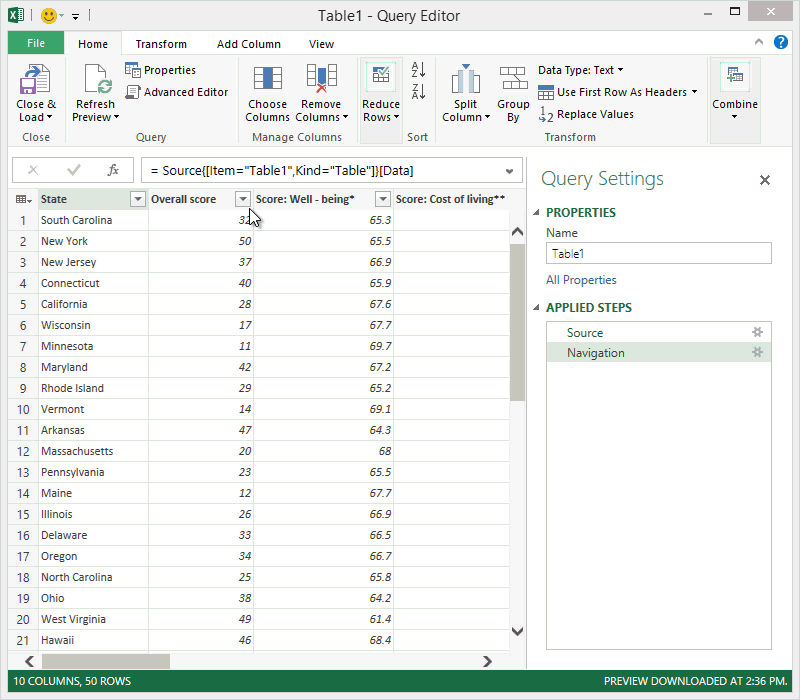
Ms excel 2016 query editor code#
Since M code is a functional language, it’s all about the functions and M code comes with a large library of predefined functions called the standard library. The advanced editor will display the query name, show the M code for the query and display a warning about any syntax violations in the M code. From either the Home tab or the View tab press the Advanced Editor button.ĭespite the “advanced” moniker, the editor is the most basic code editor you will see and doesn’t (yet) contain any intellisense auto complete, syntax highlighting or auto formatting features. You can open the advanced editor from two places in the editor ribbon. The formula bar only shows the M code for the currently selected step in the query, but the advanced editor is where you can view and edit the M code for the entire query. This will create a new step that references the previous step by name and then you can create any M code you need to. You can also create entirely new steps in your query with the formula bar by clicking on the fx symbol next to the formula bar. You can also discard your changes by clicking on the X or pressing Esc. When finished, you can accept any changes by either clicking on the check mark or pressing Enter. You can edit the M code for any step in a query by clicking into the formula and editing the existing code.

If you don’t see the formula bar, go to the View tab and make sure the Formula Bar option is checked. The Formula Barįor each step that’s created in the editor UI you can view the corresponding M code in the formula bar. There are two places where it’s possible, in the formula bar or the advanced editor. If you want to start writing or editing M code, you’re going to need to know where you can do this. M code comes with a very large library of predefined functions available and you can also create your own.

M is a functional language which means it is primarily written with functions that are called to evaluate and return results. When you create a data transformation in the power query editor UI, Excel is writing the corresponding M code for the query. M code is the language behind the scenes of power query. The M stands for data Mash-up, as power query is all about connecting to various different data sources and “Mashing” them up. This post will introduce you to the basics of the power query M code language and will assume you already know the basics of power query. Many transformation steps can be easily performed from the power query editor ribbon and you don’t need to know any code to clean and shape your data.īehind the scenes of the user friendly editor, Excel is translating each step in your transformation process from those ribbon commands into the power query M code language. It’s very powerful and also very easy to use and the query editor has a super intuitive user interface for an Excel user. It can be found in the Data tab in the Get & Transform Data section of the ribbon.

Power query is a very powerful data extraction and transformation tool that comes baked into Excel 2016 (or later), Excel for Office 365 and Power BI.


 0 kommentar(er)
0 kommentar(er)
